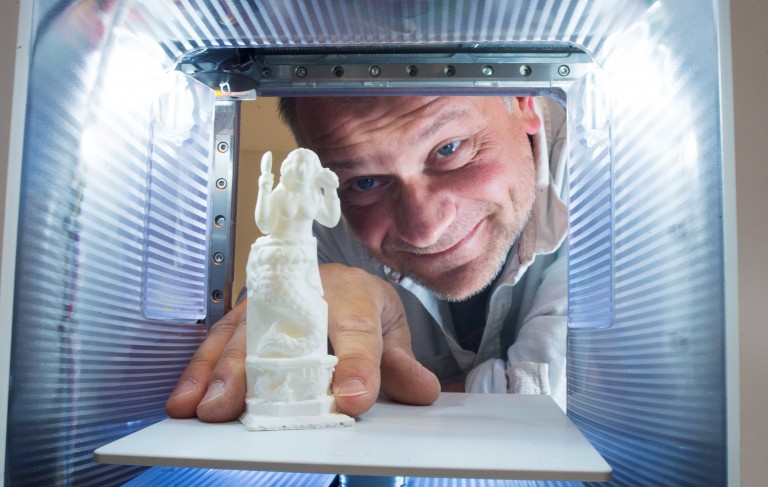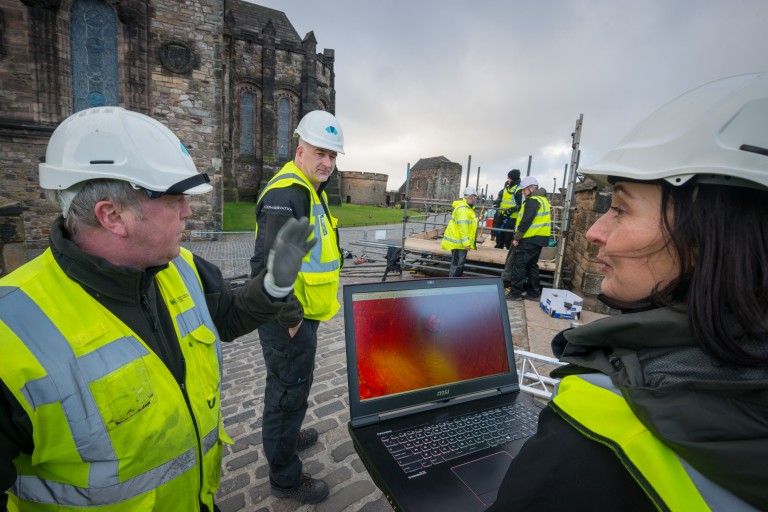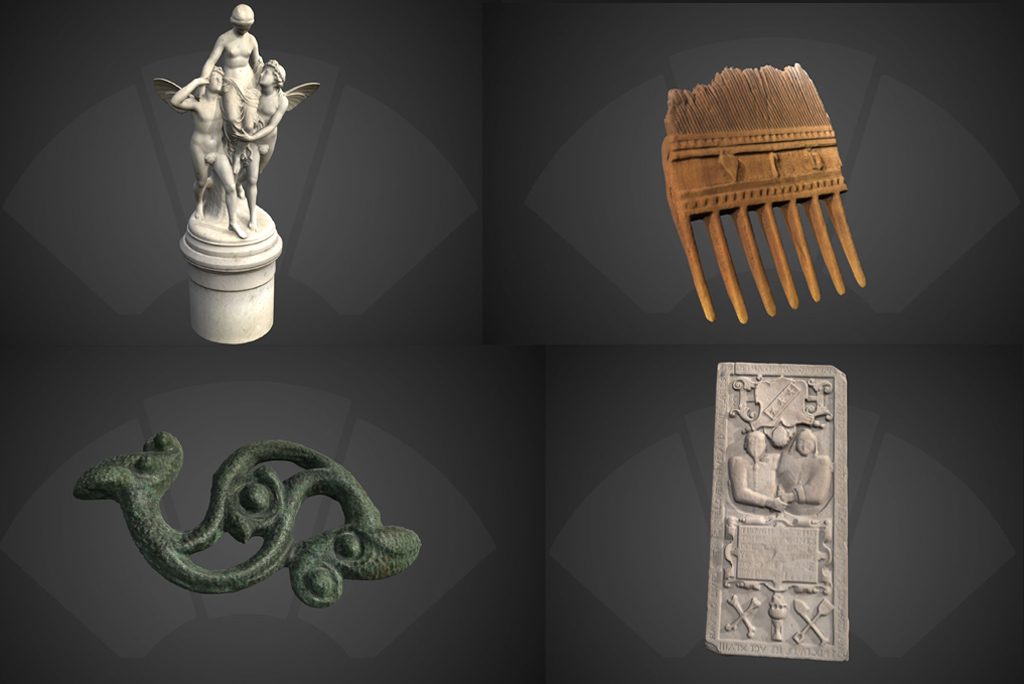Here at HES we look after some of Scotland’s most interesting Historic Collections. These collections include archives, images and objects. All of them can help us to tell stories of our history and heritage – but sometimes they’re not that easy to access.
Regular readers might remember we recently added over 50,000 historic images to our online archives. Now we’re thrilled to be unveiling a series of fantastic 3D models of the objects in our care.
What can you see?
From intricate combs and brooches to colossal cannons and sculptures, we look after an incredible range of artefacts. We’re working to digitally document them all as 3D modles, but with 40,000 to choose from this may take some time!
Here are six objects from the first set, now live on Sketchfab…
-
Statue of Psyche and Zephyrs, Melrose Abbey
In classical mythology, Pysche was a mortal woman who married Cupid. This marble statue by British sculptor John Gibson (1790–1866) shows her being carried by Zephyrs, the West Wind.
It once stood in the lobby of the Abbey Hotel in Melrose. Today, it can be seen on display in the gardens of Melrose Abbey, in the Scottish Borders – or on Sketchfab!
2. Tomb Slab, St Andrews Cathedral
This memorial to a woman named Christian Brydie dates to 1655. The slab bears her initials, and the inscription:
THOVGH IN THIS/ TOMBE MY BONES/ DOE [RO]TTING LY/ YET [RE]AD MY NAME/FOR CHRIST AND/ BRYDE AM I.
3. Head Carving, Melrose Abbey
Look up on the walls at the Commendator’s House in Melrose and you might spot this grimacing head carved from fine-grained sandstone.
The head of a balding man, smiling and showing his teeth or tongue, may have been a caricature portrait. He dates back to the 1300s.
4. The King’s Fountain, Linlithgow Palace
This is a column from the lower part of The King’s Fountain, in the courtyard of Linlithgow Palace. The fountain is carved with symbols of James V’s importance and was built to impress visitors, which it still does to this day.
5. Dragonesque Brooch, Edinburgh Castle
This is one of several Romano-British brooches found during excavations at Edinburgh Castle between 1988 and 1991.
The brooch is similar in style to examples found in the South of England dating from 50 AD to 150 AD. Our experts suspect this means people occupying the site were influenced by developments in more Romanised parts of Britain. Were they in regular contact?
6. Comb, Caerlaverock Castle
We uncovered this birch wood comb in the moat at Caerlaverock Castle.
The spine has a heart motif and the letters ‘r o’ on one side, while the reverse reads ‘n o’. Our guess is it may have been made as a love token – although the very fine teeth were probably used for removing nits!
Why Did We Do It?
The trouble is, not all our collections are easy for people to access. Some are displayed or stored at remote locations across Scotland, whilst others are fragile, heavy or even hazardous.
Recording these items helps us to:
Share them with you! By making 3D records of the collection available through websites and apps such as Sketchfab, we can enrich people’s knowledge of Scotland’s history.
Conserve them for the future. We now have an accurate baseline record of items in the Collection that are delicate or have special conservation requirements, to help us look after them better.
Research their stories. Thanks to 3D modelling (which means 3D printing is also possible), researchers can get a close up look at the intricate detail of ancient objects.
Make them accessible. Our visually impaired visitors can now hold accurate 3D printed versions of these objects, experiencing the collections up close.

We can print 3D models so people can see them up close
How Did We Do It?
With items in the HES Collection from coins and carved stones to leather shoes, there is no ‘one size fits all’ approach.
We used laser scanning, structured light scanning and a photogrammetric technique called Structure from Motion to capture metrically accurate 3D versions of our objects.
We’ve completed a lot of the work in-house, but due to the sheer volume of objects we’ve also commissioned conservation and heritage experts from AOC Archaeology and Spectrum Heritage to help.

As well as over 40,000 objects, we’re documenting 336 buildings – it’s a lot of work!
This post was co-written by James Hepher, Sophia Mirashrafi and Hugh Morrison.
We’ll be releasing lots more objects from our HES Collections on Sketchfab over the coming months as part of the Rae Project.
Keep an eye on our social media channels for updates, and let us know what you’d like to see by leaving us a comment below!

